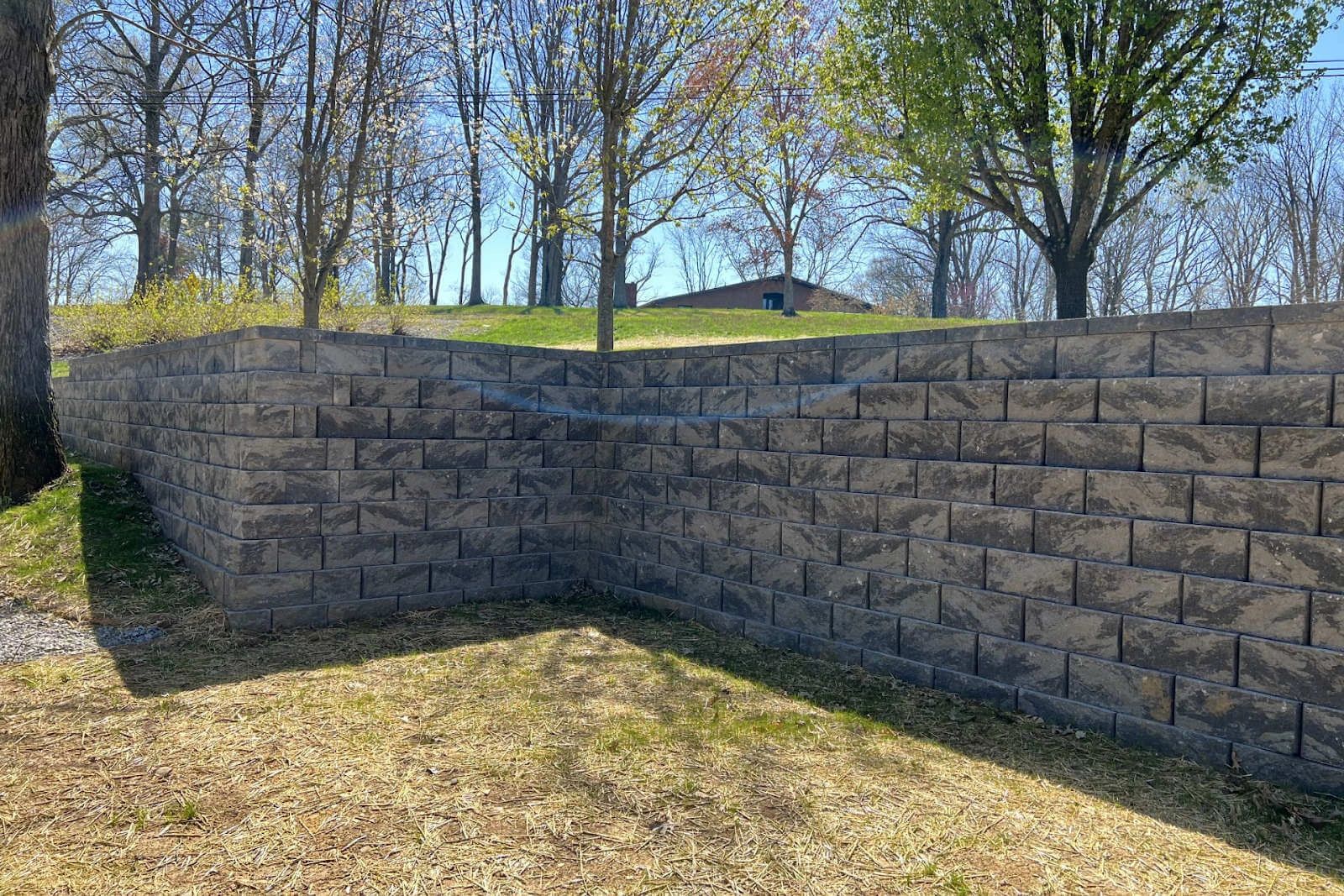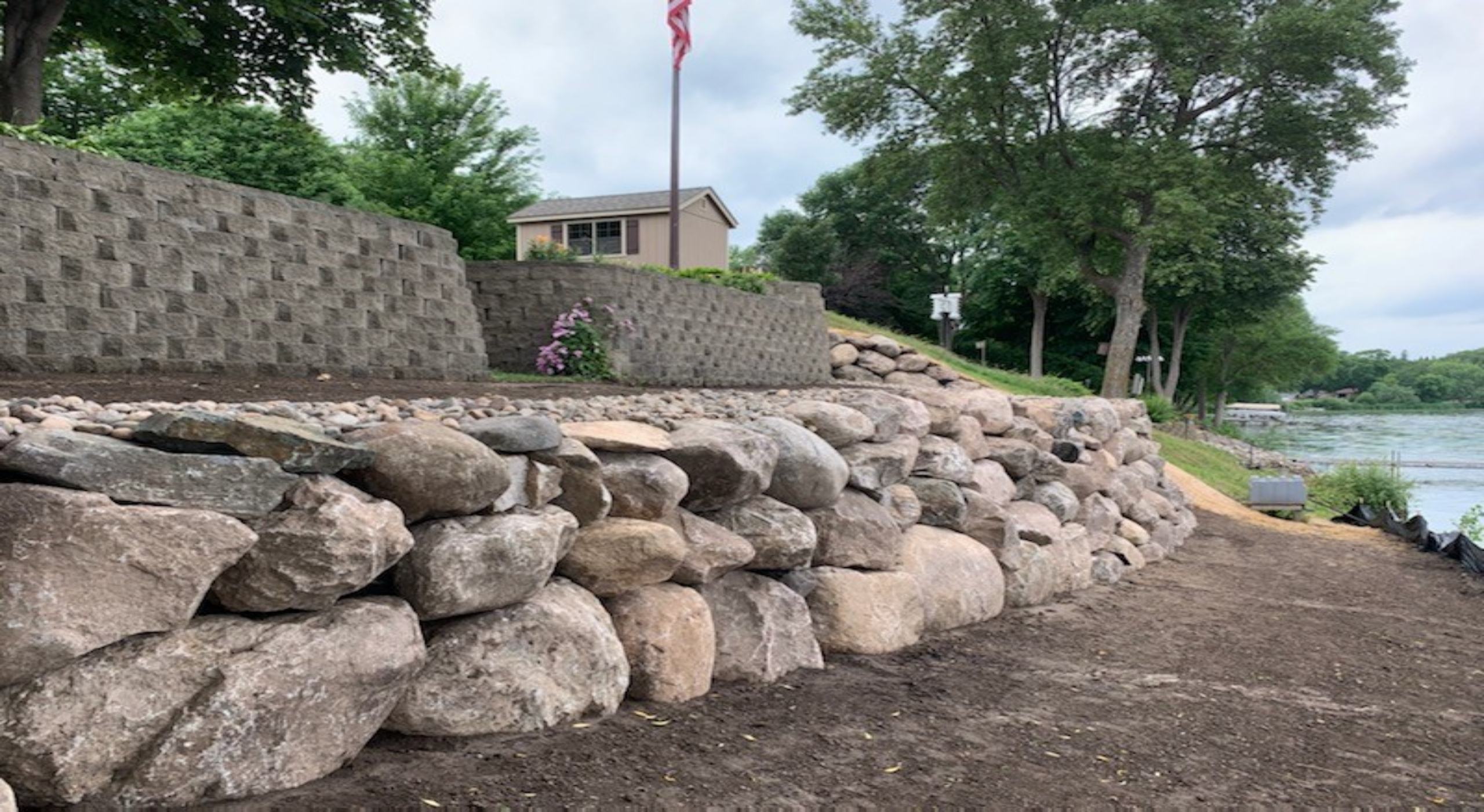Here’s why OKC Precision Retaining Walls are essential for stabilizing uneven land
Here’s why OKC Precision Retaining Walls are essential for stabilizing uneven land
Blog Article
Secret Considerations for Building Efficient Retaining Walls in Your Backyard
When you're considering constructing a keeping wall in your lawn, it's important to think regarding numerous key elements. The wall surface's purpose, the materials you'll utilize, and the details dirt conditions can all impact its performance and long life.
Recognizing the Purpose of Your Retaining Wall
When you think of developing a retaining wall surface, consider its primary function: stabilizing dirt and preventing erosion. Retaining walls give vital support for sloped landscapes, assisting to preserve dirt integrity. You'll discover they're important in areas where water runoff might or else clean away soil, resulting in costly repair work and landscape damage.
By keeping back planet, these walls develop level surface areas for gardens, patio areas, or pathways. This not just enhances your yard's aesthetics however also promotes far better drain, minimizing water merging in unwanted areas. If you're taking care of steep inclines, a sound retaining wall surface can avoid landslides, making sure safety for you and your building.
Ultimately, recognizing the objective of your retaining wall surface will certainly assist your layout decisions and aid you create a practical, resilient structure that fulfills your demands. So, take a minute to review your landscape; it'll settle in the lengthy run.
Choosing the Right Materials
When picking materials for your retaining wall, you'll intend to think about durability, aesthetics, and price. Each factor plays an important function in ensuring your wall surface stands the examination of time while looking fantastic and suitable your budget. Let's explore exactly how to make the most effective options for your task.
Product Resilience Variables
Picking the ideal materials is important for the durability and effectiveness of your retaining wall surface, since their toughness directly impacts the wall's capacity to stand up to environmental stress and anxieties. Begin by considering your neighborhood climate; products like concrete and stone resist wetness and temperature variations well. If you live in an area vulnerable to hefty rains, select products with good drainage residential properties, like gravel or porous blocks, to stop water accumulation.
Some products carry out much better in details soil kinds, so it's essential to match them accordingly. Choosing durable products warranties your retaining wall stands solid, protecting your backyard for years to come.
Visual Style Selections
Resilient materials not just guarantee your retaining wall's structural integrity but also play a crucial function in its aesthetic allure. When selecting the appropriate materials, consider how they enhance your landscape. Natural rock provides a timeless, rustic appearance, while concrete blocks can provide a smooth, contemporary surface. You may additionally take into consideration utilizing timber for a warm, natural feeling. Shade and texture issue, too; pick shades that integrate with your home and garden. Do not forget the wall surface's form-- bent walls can create a softer appearance, while straight lines can feel much more organized. By carefully selecting products that straighten with your visual vision, you'll improve your outdoor space while guaranteeing your wall stands solid versus the components.
Cost-Effectiveness Analysis
Selecting the ideal products for your retaining wall isn't simply about visual appeals; it's additionally vital for your spending plan. When choosing materials, consider both upfront costs and lasting longevity.
Don't forget to consider upkeep prices as well (OKC Precision Retaining Walls). Some materials, like all-natural rock, can include beauty and require less upkeep, while others could need routine therapies
Inevitably, consider the pros and cons of each choice versus your budget plan and the wall's intended objective. Spending carefully in products currently can avoid expensive problems down the roadway. Choose materials that balance cost and efficiency efficiently.
Analyzing Dirt Conditions and Drainage
As you start your project, assessing soil problems and water drainage is necessary for the success of your retaining wall surface. Sandy soil drains well yet lacks stability, while clay soil can retain dampness, leading to press on your wall.
Following, assess the incline of your lawn. If water naturally streams toward your wall, you'll require to apply a drainage option to avoid disintegration and stress accumulation. Think about installing perforated pipelines or gravel backfill behind the wall surface to help with drainage.
Last but not least, observe any neighboring trees or vegetation; their roots can affect soil security. By understanding your dirt problems and carrying out correct water drainage, you'll produce a solid foundation for your retaining wall that stands the test of time.
Abiding By Local Building Regulations
Before you begin building your retaining wall, you require to research local regulations to ensure conformity. It's important to understand what permits you should acquire, as this can save you from costly penalties or needing to redesign your work. Taking these steps seriously will assist you build a risk-free and reliable structure.
Research Study Local Regulations
Comprehending neighborhood guidelines is necessary when planning your retaining wall surface job, particularly since building codes can vary considerably by location. Look for guidelines on wall surface height, products, drain systems, and architectural stability. By doing your research upfront, you can ensure your retaining wall satisfies all needed codes and blends flawlessly right into your backyard.
Acquire Required Authorizations
As soon as you have actually looked into local policies, the next step is to obtain the essential licenses for your retaining wall surface task. This process assurances your wall surface follows building regulations and safety and security criteria. Get to out to your neighborhood building authority to find out what permits you require. They might require certain strategies or engineering assessments, especially for larger walls. Be prepared to send thorough drawings, consisting of dimensions and materials. Do not neglect to inspect if your project affects water drainage or surrounding residential or commercial properties, as these factors could call for extra authorizations. Safeguarding the ideal approvals can conserve you from pricey penalties or needing to dismantle your wall surface later. Bear in mind, complying with the policies currently will cause a smoother building and construction experience.

Planning the Style and Appearance
As you start preparing the layout and visual appeals of your retaining wall, take into consideration exactly how it will certainly integrate with the bordering landscape. Think of the products you'll use-- rock, brick, or concrete-- and exactly how they'll match your home's design and the all-natural elements in your lawn. Choose shades and appearances that mix effortlessly Going Here with existing features like patios, pathways, or yards.
Next, imagine the wall's shape and height. Curved walls can soften an inflexible landscape, while straight lines might communicate an extra modern-day appearance. Do not forget to include plants and greenery around the wall for an all-natural touch; this can improve its charm and incorporate it right into the setting.
Lastly, keep in mind performance. Your design must not only be aesthetically pleasing however likewise serve its purpose properly. By attentively preparing these aspects, you'll develop a retaining wall surface that improves your backyard's charm while meeting its structural duty.
Computing Elevation and Density Demands
To develop a tough retaining wall surface, you require to properly determine its elevation and thickness needs based on the soil problems and the elevation of the slope it will support. Start by assessing the slope's angle and the kind of soil, as various soils exert varying quantities of pressure.
For walls over four feet high, think about a thickness of at least 12 inches. If the wall surface is taller, boost the thickness proportionally to preserve stability.
Following, compute the elevation of the wall by determining the vertical distance it requires to maintain. For each foot of height, you ought to commonly prepare for a density of one-third of the wall's elevation.
Constantly keep in mind to account for additional variables like drainage and backfill, which can affect your wall's layout. Appropriate estimations now assure your retaining wall stands strong and lasts for several years to find.
Maintenance and Durability Considerations
While maintaining your retaining wall surface may look like a low priority, neglecting it can bring about considerable problems over time. Regular assessments are necessary; check for splits, bulges, or any signs of water damages. Attending to these issues early can save you from costly fixings down the roadway.
Maintain an eye on drainage systems, too. Obstructed drains pipes can cause water to accumulate, applying pressure on your wall surface and compromising its security. Clear particles check out here and warranty correct circulation to preserve durability.
You might also intend to review securing your wall to secure it from dampness and weathering. Depending upon the material, this may need reapplication every couple of years.
Finally, landscape design around more information your wall surface can sustain its integrity. Avoid growing large trees close by, as their origins can weaken the structure. With proactive maintenance, your retaining wall can serve you well for several years ahead.

Often Asked Inquiries
Can I Build a Retaining Wall by Myself, or Should I Work with a Professional?
You can certainly construct a preserving wall surface on your own if you have the right tools and knowledge. Working with a specialist assurances it's done appropriately, especially for bigger or more intricate frameworks. Consider your ability level before choosing.
What Are the Most Common Errors Made When Structure Retaining Walls?
When constructing retaining walls, you may forget appropriate water drainage, miss using the best materials, or neglect reinforcement. These usual blunders can bring about structural failure, so take your time and plan very carefully to stay clear of concerns.
Just how Do I Know if My Retaining Wall Needs Support?
You'll recognize your retaining wall surface requires support if you see splits, leaning, or bulging. Look for water pooling behind it or dirt erosion near the base. Address these indicators quickly to stop further damages.
What Plant kingdom Are Suitable for Landscaping Around a Retaining Wall?
When landscaping around a keeping wall, consider making use of low-maintenance plants like succulents, decorative turfs, or sneaking ground covers - OKC Precision Retaining Walls. They'll flourish in those conditions and include charm while avoiding soil disintegration around your wall
Exactly How Can I Avoid Erosion Around My Retaining Wall?
To stop disintegration around your retaining wall surface, you can plant ground cover, use compost, and mount drainage systems. On a regular basis check for water build-up and readjust landscaping to reroute drainage away from the wall.
Report this page